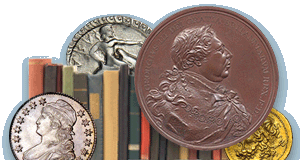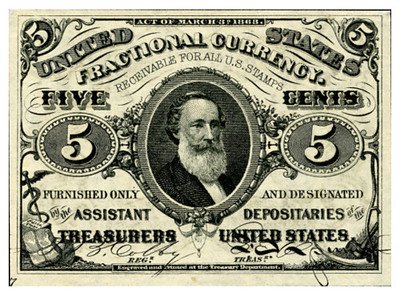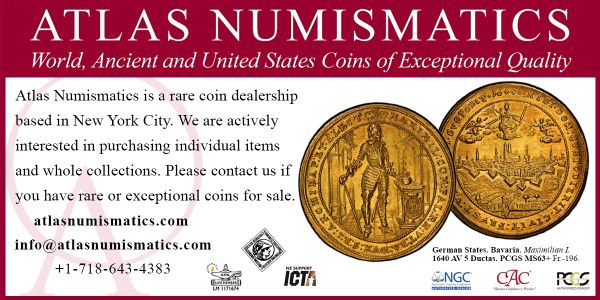
PREV ARTICLE
NEXT ARTICLE
FULL ISSUE
PREV FULL ISSUE
WOULD THE 2026 TRUMP COIN BE LEGAL?Len Augsburger and others passed along this New York Times article about the legality of plans to picture President Trump on a semiquincentennial commemorative coin. Thanks. -Editor The Trump administration on Monday defended its plan to mint a $1 coin bearing the image of President Trump despite the fact that an 1866 law dictates that only the deceased can appear on U.S. currency. Initial designs for the coins released by the U.S. treasurer last week stirred controversy and accusations that the Trump administration was violating the law so that Mr. Trump could honor himself by putting his face on a coin. The 1866 law enshrined a tradition that individuals could appear on U.S. currency only posthumously to avoid the appearance that America was a monarchy. But in a post on Monday, the Treasury Department said that featuring Mr. Trump on a coin in celebration of the nation's 250th birthday was authorized under the Circulating Collectible Coin Redesign Act of 2020. The 2020 law does appear to put restrictions on images of the "tails" side of new coins. It states that "no head and shoulders portrait or bust of any person, living or dead, and no portrait of a living person may be included in the design on the reverse of specified coins." The initial restriction on featuring the living on currency came in 1866. An explanation of the legislation on an archived page from the Treasury's website noted that the act "was caused by an uproar over the actions of the chief of the Bureau of Engraving and Printing, Spencer Clark," who had "placed himself on a five-cent note and had a large quantity of them printed before it was noticed."
To read the complete article, see:
See earlier articles with examples of coins featuring Presidents, Senators, Governors and other public figures who were alive at the time of their issuance. There is precedent. And like everything involving laws, decisions often come down to individual words and their meaning (and who is interpreting their meaning). This Politifact article concludes that "Although the concept of a Trump coin runs counter to a longstanding tradition, there are no unscalable legal obstacles to establishing a U.S. coin with Trump's image on it." -Editor Multiple pieces of coinage legislation enacted over the past few decades have included specific language prohibiting living people from being portrayed on U.S.-minted coins. In one case — a series of coins launched in 2007 honoring every president — the law's text goes further to specify that no coin in the series may "bear the image of a living former or current president, or of any deceased former president during the 2-year period following the date of the death of that president." That barrier on living presidents was specific to that particular presidential coinage series, however — not to the series that would include the proposed Trump coin. The guidance governing the series the Trump administration is considering comes from legislation authorizing a series of coins for the nation's 250th anniversary, known as the Circulating Collectible Coin Redesign Act of 2020. Trump signed the measure into law in January 2021, during his first presidency, following unanimous passage by both chambers of Congress. It authorizes the redesigns of quarters, half dollars and $1 coins in several sequential series, one of which is a 250th anniversary series to be launched in 2026. The law for the 250th series refers specifically to the reverse of the coin: "No head and shoulders portrait or bust of any person, living or dead, and no portrait of a living person may be included in the design on the reverse of any coin" in the series. But it doesn't rule out a portrait on the front of the coin. That may not be a high bar for Trump to jump if he wants to mint a coin with his image on it. Unless Congress acts, the process from here would involve only administration officials, meaning the president could maintain direct control. Even if the courts were inclined to block the proposal, experts said it's uncertain whether anyone would be able to cite a direct harm from producing a Trump coin — a requirement for filing a lawsuit. "It's unclear who would have standing to sue here," said Gabriel Mathy, an associate professor economics at American University who has studied coinage issues. During the Civil War, Spencer Clark, an official with the federal office responsible for printing paper money, put his own image on a five-cent note. He did it by leveraging a legal loophole: Congress had approved a note featuring an image of William Clark, the explorer from the Lewis & Clark expedition of the Louisiana Territory, but lawmakers neglected to specify William Clark's first name in the legislation, journalist Blake Stilwell wrote in Military.com. So Spencer Clark, having the same surname, inserted his own image instead of William Clark's. Clark also produced a separate note that featured then-U.S. Treasurer Francis E. Spinner. So in 1866, Congress passed a law saying no portrait or likeness of a living person would appear on "bonds, securities, notes, fractional or postal currency of the United States."
To read the complete article, see:
To read the earlier E-Sylum article, see:
Wayne Homren, Editor The Numismatic Bibliomania Society is a non-profit organization promoting numismatic literature. See our web site at coinbooks.org. To submit items for publication in The E-Sylum, write to the Editor at this address: whomren@gmail.com To subscribe go to: Subscribe All Rights Reserved. NBS Home Page Contact the NBS webmaster 
|



